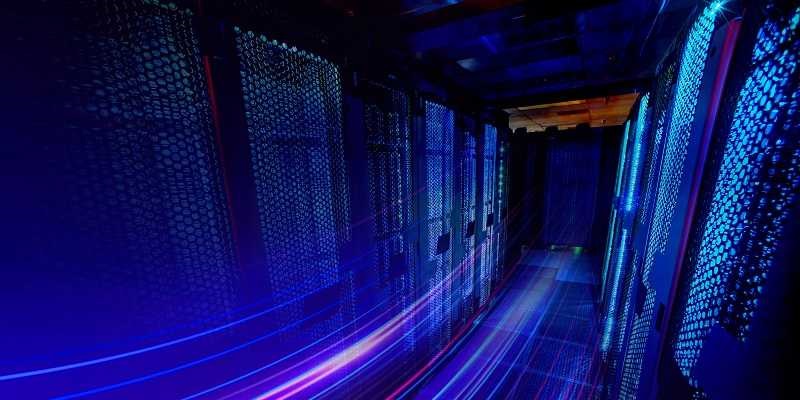In today’s technologically advanced world, data centers play a pivotal role in supporting the vast amount of information generated by businesses. To meet the increasing demand for seamless data processing and storage, the integration of artificial intelligence (AI) in data centers is becoming crucial. This article explores how AI is revolutionizing data centers by optimizing resource allocation, enhancing backup systems, improving power management, enabling intelligent cooling systems, modeling the data center environment, overcoming implementation challenges, and ultimately contributing to cost savings and improved decision-making processes.
The Growing Role of AI in Data Centers
Leading research firm Gartner estimates that AI will be operational in half of all data centers within the next two years. This surge in adoption is fueled by the numerous benefits and efficiency improvements AI brings. By leveraging AI technologies, data centers can address the challenges of resource allocation, traffic distribution, power management, cooling systems, and overall operational efficiency.
Optimizing resource allocation
One common issue in data centers is the inefficient utilization of servers. Often, servers that are not in active use remain running, leading to wasteful energy consumption. Additionally, incoming traffic is not always effectively distributed across available equipment. However, with AI, traffic patterns can be anticipated, enabling more efficient usage of equipment and maximizing resource allocation. This, in turn, improves power usage effectiveness (PUE) and reduces operational costs.
Enhancing backup systems
Unplanned outages can be highly detrimental to data center operations. By harnessing AI, data centers can leverage historical data to ascertain when outages are likely to occur, improving the establishment and management of appropriate backup systems. This proactive approach minimizes downtime, reduces the risk of data loss, and ensures uninterrupted service delivery.
Power management with AI
Power consumption is a significant concern for data center operators. AI plays a crucial role in optimizing power management systems by determining when renewable power sources, such as solar or wind, are most available. By intelligently scheduling energy usage, data centers can reduce their reliance on fossil fuels and increase their sustainability footprint. This not only benefits the environment but also reduces energy costs.
Intelligent Cooling Systems
Cooling is essential to maintain optimal operating conditions in data centers. However, traditional cooling systems are often inefficient, leading to energy wastage. AI enables data centers to direct cooling systems specifically to the systems that need it and shut down cooling in areas that don’t, based on factors like ambient temperature and machine heat. By dynamically adjusting the cooling distribution, data centers can achieve significant energy savings without compromising performance.
Modeling the Data Center Environment
Creating a digital twin of the physical environment in a data center can revolutionize its management. By developing a virtual representation of the data center, AI can model how various components interact. This allows operators to identify potential bottlenecks, optimize workflows, and simulate the impact of changes before implementing them physically. The use of AI-driven simulations enhances the efficiency and performance of data center operations.
Overcoming challenges in AI implementation
While the benefits of AI integration are evident, several challenges hinder its implementation. The most significant challenge is data scarcity. AI requires large volumes of high-quality data to train algorithms effectively. However, data centers may face difficulties in obtaining the quantity and quality of data required for successful AI implementation. Additionally, the complexity and costs associated with implementing new systems and equipment to support AI can deter some organizations. Despite these challenges, the potential cost savings and long-term benefits make AI implementation highly attractive.
Cost savings and benefits of AI implementation
The integration of AI in data centers yields reliable cost savings. By optimizing resource allocation, enhancing backup systems, refining power management, and utilizing intelligent cooling systems, data centers can significantly reduce operational costs. Furthermore, AI-driven decision-making processes facilitate more informed and efficient strategic choices, leading to enhanced overall performance and customer satisfaction.
Limitations of AI in data centers
Although AI brings remarkable improvements, it still has limitations in data center operations. AI does not yet possess the ability to make complex strategic decisions in a timely manner. However, it excels in identifying anomalies and providing valuable insights to assist in human decision-making processes. As AI continues to evolve, it is expected to bridge this gap and play a more strategic role in data center management.
The growing role of AI in data centers is transforming the industry by optimizing efficiency, enhancing performance, and driving cost savings. Data centers are now able to allocate resources more effectively, anticipate traffic patterns, improve backup systems, optimize power management, implement intelligent cooling systems, and model their environments for better decision-making. Although challenges persist, the potential benefits of AI integration in data centers are undeniable. As technology advances, AI’s strategic decision-making capabilities are expected to further revolutionize data center operations, opening up new possibilities for improved productivity and innovation.

